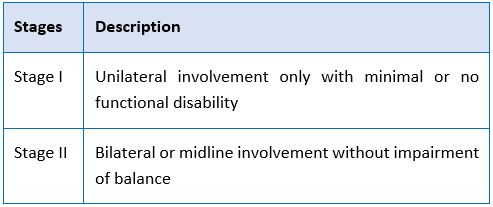Ayurvedic management of Parkinson’s Disease - A Case Study
DOI:
https://doi.org/10.21760/jaims.9.7.48Keywords:
Abyanga, Basti, Parkinson’s disease, Swedhana, ShamanaAbstract
Parkinson's disease is a movement disorder characterized by the degeneration of neurons in the nigrostriatal dopaminergic system, with its etiology remaining unknown. An imbalance between dopamine and acetylcholine neurotransmitters, involving either an increase in acetylcholine or a decrease in dopamine levels, is observed. Clinical features of Parkinson's disease are an expressionless face with a staring look and infrequent blinking, along with characteristics such as greasy skin, soft and rapid monotonous speech, and a flexed posture known as universal flexion. The gait of individuals with Parkinson's disease is characterized by walking with short steps, a tendency to run, delayed initiation of walking, shortened stride, rapid small steps, and a phenomenon known as festination. Other gait-related issues include reduced arm swinging, impaired balance during turning, propulsion and retropulsion, as well as lateropulsion and kinesia paradox. Resting tremors, rigidity and hypokinesia are common symptoms experienced by patients with Parkinson's disease. In a case study involving a 54-year-old male diagnosed with Parkinson's disease, treatment included Basti, Abyanga, Swedana, and Shamanaoushadi. Significant improvement in symptoms was observed, highlighting the beneficial effects of Shodana and Shamana therapies in enhancing the patient's quality of life.
Downloads
References
Kasper, Fauci, Hauser, Longo, Jameson, Loscalzo, Harrisons Principle of Internal Medicine, 19th Edition, page no. 996
Kasper, Fauci, Hauser, Longo, Jameson, Loscalzo, Harrisons Principle of Internal Medicine, 19th Edition, page no. 997
Agnivesha, Charaka Samhita, revised by Charaka & Dridhabala, Ayurveda Dipika commentary Chakrapani Dutta, edited by Yadav ji Trikam ji, Chaukhamba Academy, Varanasi, reprint 2010, page no. 738
Yogaratnakar, vidyothini hindi commentary by Vaidya lakshmipathi shastri edited by Bhishagratna Brahma Shankar Shastri, Chaukhambha Sanskrit Sansthan, Varanasi, 2014, page no. 540.
Vagbhata, Sutrastana 14th Chapter, Astanga Hridaya. Edited by Pandit Harisadhashiva Paradakara Bhisagacharya with commentaries, Sarvanga Sundari of Arunadatta and Ayurveda Rasayana of Hemadri.Chaukhamba Varanasi: Sanskrit Sansthan: Verse 15
Agnivesha, Chikitsastana 28th chapter Charaka Samhita, revised by charaka & Dridhabala, Ayurveda Dipika commentary Chakrapani Dutta, edited by Yadav ji Trikam ji, Chaukhamba Academy, Varanasi, reprint 2010, Verse 84
Vagbhata, Sutrastana 13th Chapter, Astanga Hridaya.Edited by Pandit Harisadhashiva Paradakara Bhisagacharya with commentaries, Sarvanga Sundari of Arunadatta and Ayurveda Rasayana of Hemadri.Chaukhamba Varanasi: Sanskrit Sansthan: Verse 2
Vagbhata, Sutrastana 2nd Chapter, Astanga Hridaya. Edited by Pandit Harisadhashiva Paradakara Bhisagacharya with commentaries, Sarvanga Sundari of Arunadatta and Ayurveda Rasayana of Hemadri. Chaukhamba Varanasi: Sanskrit Sansthan: Verse 8
K R Shrikantha Murthy, Bhavaprakasha of bhavamishra; Vatavyadi Adikara vol 2. 3rd edition. Varanasi: Chaukamba Krishnadas Academy; 2005 verse 151-162














